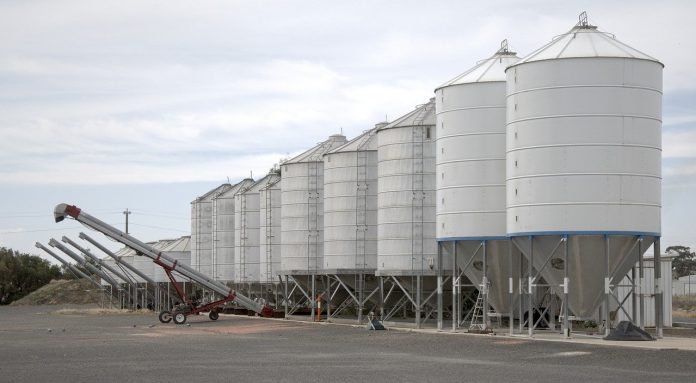The end of November is normally not a great time for grain price changes, and we are proving the normal this year. Sometimes we get surprised about now. Maybe the harvest is over and we are counting bushels, and we are short of expectations. Maybe we thought the crop got a little too dry (like this year), and we are not expecting as much as we get (like this year, again).
There is news in the corn markets, but there is no big surprise. There is a little surprise that the crop is generous for all the rain it had. It is hard to be encouraged by the news we are seeing. Harvest is mostly over. Here and there is a field being finished, but the end is in sight.
Ohio farmers are lagging a little on the corn harvest, but we have been behind a little since the late start. The U.S. Department of Agriculture says Ohio’s corn harvest was at 86% as of the evening of Nov. 26, and so we gained 5% for the week. However, 89% is normal for this time. On the other hand, the U.S. is slightly ahead of normal. We have done 96% of the national harvest and 95% is average.
The soybean harvest is statistically finished in Ohio and across the fruited plain. USDA did not even report on soybean harvest this week and this is the last week for the entire Monday Crop Progress Report until April 1.
Watching farmers on YouTube
I have been following harvest progress anecdotally on regular releases of YouTube videos from “Laura Farms.” The videos pop up on my phone, along with my other favorite, “Missionary Bush Pilot,” a regular report from a pilot in Papua, New Guinea.
Laura and her husband are three years into a 2,000-acre irrigated Nebraska farm. With some equipment sharing with parents, they run 12-row equipment with GPS help, and in the process, remind me how long ago my actual farming was.
When I finished, I was doing 1,500 acres of my farming and shared farming, but with 16-foot equipment and still corn pickers instead of combines for most of the corn. We almost always got up from the Thanksgiving meal to put the Carhartts back on and go out to the corn wars, hopefully in the last field. Being done before Thanksgiving was a big deal.
Laura and her husband are finished with harvest and doing some jobs that I am not familiar with, which makes them interesting. They are applying ammonia with a big applicator, which is common in the heart of the Corn Belt but mostly not done in northeast Ohio. It is starting to be done on some farms in Trumbull County, where there is less snow cover.
We tend to have too much rain, which leaches out the N, and in Ashtabula County, we have enough consistent snow cover that the ground does not freeze, so it is easy to leach the N.
Last week, Laura was running a combination tool to eradicate pivot irrigation wheel tracks that can get deep enough to get the wheels stuck in some conditions. If you want to remember the good old days, you can watch the video from Gierok Farms. This is a traditional dairy farm in Wisconsin. They have been featuring harvest with a two-row mounted picker. Now, they are chopping stalks and collecting them for bedding.
Prices
Today, Nov.27 as this was being written, was an ugly day for corn prices. December futures lost almost eight cents. Going into the night session, we were at midnight and stuck on $4.55. Some traders are blaming the current wheat flame-out for lower corn prices, but there is enough bad news in corn that the wheat is not that important, except as an excuse when you have to write a market report, and today’s market is a little surprising.
The fact is, we exported 16 million bushels of corn last week, and that was almost a third more than we shipped last week. The trouble is, it was a third less than what we shipped the same week last year. It is also a marketing year low.
For the entire new marketing year we are actually 25% ahead of last year’s exports, so I guess you just have to decide what is good news and what is bad. The big spec funds are convinced corn is not low enough.
According to the Commitment of Traders Report, specs have added over 22,000 short contracts and are now over 185,000 contracts short. That is, they are seriously better that the market goes lower.
Soybeans are a little different to analyze. Prices were mixed, not significantly lower, even though the spec funds are going short with the beans also. We shipped out 53 million bushels last week, but that was 11.5% lower than the previous week. It was 35.3% less than the same week in 2022.
More than half did go to China, which always seems to affect the market disproportionately. Much of the rest went to Germany. Still, the planting news from Brazil is good enough to blunt any negatives, such as the fact that the specs shorted the market another 6,300 contracts and are now short 81,500 contracts.
Wheat futures took a long drop recently. It doesn’t help that traders see crop conditions improving, and wheat emergence now at 91% — two points above our five-year average.
We lost over seven cents Friday, Nov. 24, and then gained 22 cents in the day session Nov. 27. That would feel like a positive market if it were not for the long, long downtrend in futures.
In late July, December Chicago wheat futures were trading close to $8. Our recent high was at $5.98 3/4 Nov. 11, and then we lost over 71 cents. Currently, we are unchanged for the night session, at $5.34 1/4. Doesn’t feel good to remember farm bids of $8 at one time.













